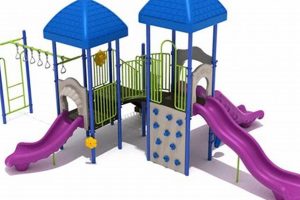The practice of organizing elementary school instruction by subject matter, with specialized teachers instructing different subjects rather than a single teacher covering all subjects for one class, is a common model in upper elementary grades. For instance, one teacher might teach mathematics and science to several groups of students, while another focuses on language arts and social studies. This structure contrasts with the self-contained classroom model prevalent in lower elementary grades.
Subject-specific instruction can enhance the depth and breadth of learning by allowing educators to focus on their areas of expertise. This approach potentially leads to richer content delivery and more engaging learning experiences for students. Historically, the move toward specialization reflected a growing emphasis on subject matter knowledge as academic disciplines advanced. It also addressed the increasing complexity of curricula as educational standards evolved.
This exploration will further examine the pedagogical and administrative considerations surrounding this organizational approach, considering its potential advantages and disadvantages for students, teachers, and school communities.
Tips for Implementing Subject-Specific Instruction
Successful implementation of subject-focused teaching in elementary settings requires careful planning and execution. The following tips offer guidance for schools considering or refining this organizational model.
Tip 1: Professional Development: Robust professional development is crucial. Teachers need support in deepening their subject matter expertise and developing pedagogical strategies specific to their assigned subject area.
Tip 2: Collaborative Planning: Dedicated time for teachers to collaborate on curriculum alignment and development is essential. This ensures consistent learning experiences across classrooms and helps prevent fragmentation of concepts.
Tip 3: Resource Allocation: Equitable distribution of resources, including materials, technology, and support staff, is vital for all subject areas. This prevents imbalances that could disadvantage certain subjects or student groups.
Tip 4: Transition Support for Students: Clear communication and structured routines can help students adapt to moving between classrooms and teachers. Designated transition times and consistent expectations minimize disruption and maximize instructional time.
Tip 5: Ongoing Evaluation and Adjustment: Regular assessment of the model’s effectiveness through data analysis and feedback from teachers, students, and parents allows for continuous improvement and necessary adjustments.
Tip 6: Parent and Community Involvement: Transparent communication with parents about the rationale and implementation of subject-focused instruction fosters understanding and support. Engaging parents in the process can enhance its overall success.
Tip 7: Consider Student Developmental Needs: Younger students may require different approaches than older elementary students. Developmentally appropriate practices should guide instructional decisions and classroom management strategies.
Effective implementation of these tips can create an environment where specialized instruction thrives, leading to enhanced learning outcomes for all students.
By considering these factors, schools can move toward a model of subject-specific instruction that effectively balances the needs of students, teachers, and the broader school community. The following section will explore potential challenges and offer solutions for addressing them.
1. Curriculum Alignment
Effective departmentalization hinges on meticulous curriculum alignment. Without a cohesive and articulated curriculum across grade levels and subjects, the potential benefits of specialized instruction diminish. Alignment ensures a logical progression of learning, preventing redundancy and gaps in knowledge as students move between different teachers and subjects. This section explores key facets of curriculum alignment within a departmentalized elementary school structure.
- Vertical Alignment
Vertical alignment refers to the sequencing of curriculum across grade levels. In a departmentalized setting, it ensures that each teacher builds upon the knowledge and skills students acquired in previous grades. For example, a fourth-grade math teacher relies on the foundational skills taught by the third-grade math teacher. Without vertical alignment, students may encounter gaps or repetitions in content, hindering their progress.
- Horizontal Alignment
Horizontal alignment focuses on coordination within a grade level. In departmentalized models, it ensures that teachers of different subjects are working towards common goals and reinforcing similar skills. For instance, the fourth-grade science teacher might coordinate with the language arts teacher to integrate scientific writing into the curriculum. This approach strengthens interdisciplinary connections and provides students with a more integrated learning experience.
- Assessment Alignment
Assessment methods must align with the curriculum to accurately measure student learning. In a departmentalized structure, this requires coordination among teachers to ensure that assessments reflect the overall curriculum goals. For example, teachers might develop common assessments to evaluate student understanding of shared concepts. Consistent assessment practices provide a clear picture of student progress and inform instructional adjustments across different subjects.
- Pacing and Sequencing
Effective curriculum alignment also addresses pacing and sequencing of content. In departmentalized settings, teachers must collaborate to determine the appropriate pace for instruction and the logical sequence of concepts within and across subjects. This coordinated approach ensures that students are not overwhelmed by disparate pacing in different classes and that foundational concepts are taught before more complex ones. A shared calendar and regular communication can facilitate this process.
These interconnected facets of curriculum alignment are foundational to successful departmentalization in elementary schools. By prioritizing a cohesive and articulated curriculum, schools can maximize the benefits of specialized instruction and create a more effective learning environment for all students. A well-aligned curriculum provides a roadmap for teachers, ensures a consistent learning experience for students, and facilitates accurate assessment of progress.
2. Teacher Expertise
Teacher expertise forms a cornerstone of successful departmentalization in elementary schools. The shift to subject-specific instruction amplifies the importance of deep content knowledge and pedagogical skill within each discipline. When teachers focus on a specific subject area, they can cultivate a higher level of expertise than in a traditional, self-contained classroom model. This specialization allows educators to delve deeper into the subject matter, explore nuances, and develop advanced pedagogical approaches tailored to the specific discipline. For example, a teacher specializing in mathematics can develop a profound understanding of mathematical concepts, explore various instructional strategies specific to math, and stay abreast of current research in mathematics education. This depth of knowledge translates to richer learning experiences for students.
The connection between teacher expertise and departmentalization is bidirectional. Departmentalization creates an environment where teachers can hone their expertise, and concurrently, highly developed teacher expertise enhances the effectiveness of departmentalization. Consider a science specialist who, through focused professional development and experience teaching science exclusively, develops a deep understanding of scientific inquiry and experimentation. This teacher can design engaging, hands-on science lessons that foster critical thinking and problem-solving skills in students, outcomes potentially less achievable in a generalized classroom setting. Conversely, the opportunity to specialize encourages teachers to invest in professional growth within their chosen field, further deepening their expertise and enriching student learning. This cycle of specialization and expertise enhancement creates a powerful dynamic that benefits both teachers and students.
Cultivating and supporting teacher expertise within a departmentalized model requires strategic investment in professional development opportunities tailored to specific subjects. Providing resources such as subject-specific materials, access to professional journals, and opportunities for collaborative learning among teachers within the same discipline further strengthens expertise. Recognizing and valuing teacher expertise is crucial for successful departmentalization. By fostering an environment where teachers can develop and apply their specialized knowledge and skills, schools can create a more engaging and effective learning experience for all students. The resulting increase in instructional quality directly contributes to improved student outcomes and a more enriching educational experience. Addressing potential challenges, such as ensuring equitable access to expert teachers across all student populations, remains an ongoing consideration in implementing effective departmentalized models.
3. Student Transitions
Student transitions represent a crucial element within the framework of elementary school departmentalization. The shift from a self-contained classroom, where students remain with one teacher throughout the day, to a departmentalized structure necessitates frequent movement between classrooms and teachers. This increased mobility introduces both opportunities and challenges. Effective management of student transitions directly impacts instructional time, student behavior, and overall school climate. For instance, poorly planned transitions can lead to wasted time, increased student anxiety, and classroom disruptions. Conversely, well-structured transitions can create a sense of order, minimize disruptions, and maximize learning time. Consider a school where students have only five minutes to move between classrooms located in different wings of the building. Without clear procedures and expectations, this transition period could easily become chaotic, resulting in lost instructional time and heightened student stress. However, with established routines, designated pathways, and clear expectations for student behavior during transitions, the same five minutes can be a smooth and efficient process.
Several factors influence the success of student transitions in a departmentalized setting. The physical layout of the school building plays a significant role. Schools with classrooms clustered by subject area can minimize travel time and facilitate smoother transitions. Clear and consistent school-wide procedures, such as designated hallways for specific grade levels or staggered transition times, further enhance efficiency. Classroom management strategies also contribute significantly to successful transitions. Teachers who establish clear expectations for student behavior during transitions and provide consistent reinforcement create a more orderly environment. Additionally, preparing students for the upcoming class during the transition period, such as providing a brief overview of the next lesson or assigning a quick warm-up activity, can minimize disruptions and maximize instructional time. For example, a teacher might ask students to review their notes from the previous math lesson while walking to the science classroom, effectively utilizing the transition time for reinforcement and preparation.
Successfully navigating student transitions is essential for maximizing the benefits of departmentalization in elementary schools. While the shift to subject-specific instruction offers advantages in terms of teacher expertise and curriculum depth, ineffective management of transitions can negate these benefits. By addressing the logistical and pedagogical aspects of student movement, schools can create a learning environment that is both efficient and conducive to student success. This requires a comprehensive approach that considers the physical environment, school-wide procedures, and individual classroom management strategies. Ultimately, well-managed transitions contribute to a positive school climate, minimize disruptions, and maximize instructional time, paving the way for a more effective and enriching learning experience for all students.
4. Resource Allocation
Resource allocation plays a critical role in the effective implementation of departmentalization within elementary schools. The shift to subject-specific instruction necessitates a strategic approach to distributing resourcesincluding materials, technology, funding, and personnelto ensure equitable support for all subject areas. A well-defined resource allocation strategy addresses potential imbalances and ensures that each department has the necessary tools and support to deliver high-quality instruction. Without careful planning and execution, some subjects may be inadvertently prioritized over others, leading to disparities in educational experiences and potentially hindering student achievement in specific areas.
- Funding Distribution
Equitable funding distribution is paramount in departmentalized settings. Each subject area requires specific resources, ranging from specialized equipment for science labs to diverse literary texts for language arts classrooms. Disparities in funding can lead to significant inequities in the quality of instruction and resources available to students. A transparent and needs-based budgeting process, involving input from teachers and department heads, is crucial for ensuring that all subjects receive adequate funding. For example, a school that heavily invests in technology for its mathematics department while neglecting to provide updated materials for its social studies classrooms creates an imbalance that could negatively impact student learning in social studies.
- Material Resources
Access to appropriate materials directly impacts the quality of instruction. In a departmentalized structure, this includes ensuring that each subject area has the necessary textbooks, manipulatives, art supplies, or other subject-specific materials. An inventory system that tracks material usage and allows teachers to request necessary resources is essential for effective resource management. For example, a science department might require specific lab equipment, while an art department needs a variety of art supplies. Failing to provide adequate materials for all subjects can limit instructional opportunities and create disparities in the learning experiences of students.
- Technology Integration
Technology plays an increasingly vital role in modern education. Effective resource allocation in departmentalized settings necessitates equitable access to technology across all subject areas. This includes providing computers, software, interactive whiteboards, and other technological resources that support subject-specific instruction. Professional development opportunities for teachers to integrate technology effectively into their lessons are also crucial. For example, while interactive simulations might be beneficial in a science classroom, language arts teachers might benefit from access to digital writing tools and online libraries. Unequal access to technology can exacerbate existing inequities and limit the potential of technology to enhance learning across different disciplines.
- Personnel Allocation
Strategic personnel allocation is essential for effective departmentalization. This includes assigning teachers to subjects based on their expertise and qualifications, providing adequate support staff for each department, and ensuring a balanced student-teacher ratio across all subjects. Careful consideration of teacher qualifications and experience is vital for maximizing the benefits of subject-specific instruction. For example, assigning a teacher with a strong background in mathematics to teach math, and a teacher with a passion for literature to teach language arts, ensures that students benefit from specialized instruction. Additionally, providing adequate support staff, such as teaching assistants or specialized technicians, can enhance the quality of instruction and create a more supportive learning environment.
These interconnected facets of resource allocation significantly impact the success of departmentalization in elementary schools. A strategic and equitable approach to resource distribution ensures that all subject areas receive adequate support, maximizing the potential benefits of specialized instruction and fostering a more equitable and enriching learning environment for all students. Failing to address resource allocation effectively can lead to disparities in educational opportunities and undermine the intended goals of departmentalization. By prioritizing equitable resource allocation, schools can create a more balanced and effective learning experience for all students, ensuring that the shift to subject-specific instruction translates into improved outcomes across all disciplines.
5. Collaboration
Collaboration emerges as a critical component of successful departmentalization in elementary schools. The shift to subject-specific instruction necessitates increased interaction and coordination among teachers. Effective collaboration ensures curriculum alignment, fosters a shared understanding of student learning needs, and promotes a cohesive learning experience. When teachers work together, they can share best practices, develop interdisciplinary connections, and create a more consistent learning environment for students. For instance, a math teacher might collaborate with a science teacher to develop a lesson that integrates mathematical concepts into a science experiment, reinforcing learning in both subjects. Without effective collaboration, a departmentalized structure can lead to fragmented learning experiences, curriculum gaps, and inconsistencies in instructional approaches. Consider a scenario where the fourth-grade English and social studies teachers independently assign extensive research projects simultaneously. This lack of coordination could overwhelm students and diminish the quality of their work in both subjects. Collaborative planning would mitigate this issue, allowing teachers to align assignments, stagger deadlines, and potentially even develop interdisciplinary projects that enrich learning in both areas. The absence of collaborative structures within a departmentalized setting can undermine the potential benefits of specialization and create a disjointed learning experience for students.
Several factors contribute to successful collaboration in a departmentalized elementary school. Dedicated time for collaborative planning is essential. Providing teachers with common planning periods or designated collaboration time allows them to discuss curriculum alignment, share instructional strategies, and address student learning needs collectively. Establishing clear communication channels, such as regular departmental meetings or online platforms for sharing resources, further enhances collaborative efforts. A shared understanding of school-wide goals and expectations fosters a collaborative spirit. When teachers understand the overarching vision for student learning, they are more likely to work together to achieve those goals. Professional development opportunities focused on collaborative practices can also equip teachers with the skills and strategies necessary for effective teamwork. For example, training on co-teaching strategies, differentiated instruction, and assessment practices can enhance collaborative efforts and improve instructional outcomes. Furthermore, a supportive school culture that values collaboration and provides resources to support collaborative efforts is essential for long-term success.
In conclusion, collaboration serves as a vital link in ensuring the effectiveness of departmentalization in elementary schools. It mitigates potential challenges associated with fragmented instruction and fosters a more cohesive and enriching learning experience for students. By prioritizing collaboration, schools can maximize the benefits of specialization and create a learning environment where teachers work together to support student success. Addressing potential barriers to collaboration, such as scheduling conflicts or differing instructional philosophies, is crucial for realizing the full potential of this essential component. Ultimately, the degree of collaborative integration directly influences the efficacy of a departmentalized model and its impact on student learning outcomes. Further exploration might examine specific collaborative strategies employed by successful departmentalized elementary schools and analyze their impact on student achievement.
6. Instructional Depth
Instructional depth represents a key potential advantage of departmentalization in elementary school settings. This organizational structure, where teachers specialize in specific subjects, allows for a more profound exploration of content than typically possible in a self-contained classroom. Subject specialization fosters deeper content knowledge among educators. This enhanced expertise translates into richer learning experiences for students, as teachers can delve into the nuances of their subject matter, explore complex concepts, and engage students in higher-order thinking skills. For example, an elementary teacher specializing in science can design and implement more sophisticated experiments, fostering a deeper understanding of scientific inquiry than might be feasible for a generalist responsible for all subjects. This increased depth can ignite student curiosity and cultivate a passion for specific disciplines.
The connection between instructional depth and departmentalization operates on multiple levels. Firstly, specialization allows teachers to dedicate more time and focus to their chosen subject, leading to a more comprehensive understanding of the content. This mastery equips them to present information in a more engaging and nuanced manner, facilitating deeper student learning. Secondly, departmentalization provides opportunities for teachers to refine their pedagogical skills within their area of expertise. A math specialist, for example, can develop a repertoire of instructional strategies specifically tailored to mathematical concepts, leading to more effective teaching and deeper student understanding. Thirdly, focused professional development within a specific subject area enhances teacher knowledge and pedagogical skill, further contributing to instructional depth. A teacher specializing in language arts might participate in workshops on teaching writing or analyzing literature, leading to more sophisticated classroom practices and a deeper exploration of literary concepts. These interconnected factors contribute to a richer, more engaging, and ultimately more effective learning experience for students.
In summary, instructional depth represents a core benefit of departmentalization in elementary schools. While logistical and administrative challenges exist, the potential for increased content exploration and enhanced pedagogical expertise offers significant advantages for student learning. Addressing potential concerns, such as ensuring equitable access to specialized instruction across all student populations and maintaining a sense of community within the school, remains crucial for successful implementation. Future investigations could explore specific pedagogical approaches employed by specialist teachers to foster deeper learning within their respective disciplines and analyze the impact of departmentalization on student achievement in various subject areas. Ultimately, prioritizing instructional depth contributes to a more rigorous and enriching educational experience, preparing students for the intellectual demands of higher education and beyond.
7. Developmental Needs
Careful consideration of developmental needs is paramount when implementing departmentalization in elementary schools. The transition from a self-contained classroom to a subject-specific model presents unique challenges and opportunities related to students’ social, emotional, and cognitive development. Younger elementary students, for instance, typically thrive on consistent routines and close relationships with a single teacher. Frequent transitions between classrooms and teachers can be disruptive and anxiety-inducing for some children in this age group. Conversely, older elementary students, with their increasing independence and capacity for abstract thought, may benefit from the specialized instruction and varied learning environments offered by departmentalization. Recognizing these developmental differences is crucial for successful implementation. Imagine a kindergartener struggling to navigate the hallways between classes, feeling lost and overwhelmed by the constant change in environment. This scenario highlights the importance of considering developmental readiness when implementing departmentalization, particularly in the lower elementary grades. A phased approach, perhaps introducing departmentalization in later grades, might be more appropriate for younger students.
Effective departmentalization strategies acknowledge these developmental variations. For younger students, minimizing transitions, establishing clear routines, and providing opportunities for consistent interaction with a primary caregiver within the school can ease the transition to a departmentalized structure. Assigning lockers near classrooms or implementing buddy systems for navigating the school can alleviate anxiety and foster a sense of belonging. For older students, departmentalization can provide opportunities for increased autonomy and responsibility. Allowing students to manage their own schedules, materials, and assignments can foster organizational skills and self-reliance. Moreover, subject-specific instruction can cater to diverse learning styles and interests, potentially sparking greater engagement and motivation in older elementary students. Consider a fifth-grade student passionate about science who thrives in a dedicated science classroom equipped with specialized materials and led by a teacher with deep scientific expertise. This focused learning environment can nurture the student’s interest and provide opportunities for deeper exploration than might be possible in a self-contained classroom.
In summary, aligning departmentalization strategies with student developmental needs is essential for maximizing its benefits and minimizing potential drawbacks. A nuanced approach that considers the varying needs of different age groups contributes to a more successful and supportive learning environment. Ignoring developmental factors can lead to increased student anxiety, disengagement, and ultimately, hinder academic progress. Further exploration might examine the long-term impact of departmentalization on student social-emotional development and investigate best practices for supporting students of varying developmental levels within a departmentalized elementary school structure. Ultimately, recognizing and addressing developmental needs is crucial for creating a learning environment that promotes both academic achievement and overall well-being.
Frequently Asked Questions about Departmentalization in Elementary School
This section addresses common questions and concerns regarding the implementation of departmentalization in elementary schools.
Question 1: Does departmentalization negatively impact the development of strong student-teacher relationships?
While students interact with multiple teachers in a departmentalized setting, opportunities for meaningful relationships remain. Teachers specializing in particular subjects often develop strong rapport with students based on shared interests and passions. Additionally, schools can implement structures, such as advisory periods or homeroom classes, to foster closer student-teacher connections.
Question 2: Is departmentalization suitable for all elementary grade levels?
The appropriateness of departmentalization varies depending on student developmental needs. Younger students may benefit from the stability and consistency of a self-contained classroom, while older elementary students often thrive in the specialized learning environments offered by departmentalization. A phased approach, introducing departmentalization in later grades, may be more suitable for some schools.
Question 3: How does departmentalization affect students with learning differences or special needs?
Careful planning and collaboration between special education staff and subject-matter teachers are essential for supporting students with diverse learning needs in a departmentalized setting. Individualized Education Programs (IEPs) should be adapted to reflect the departmentalized structure, and clear communication channels between teachers are crucial for ensuring consistent support and appropriate accommodations.
Question 4: What are the key logistical challenges associated with implementing departmentalization?
Logistical challenges can include scheduling complexities, managing student transitions between classes, ensuring equitable resource allocation across departments, and providing adequate professional development for teachers. Careful planning and ongoing evaluation are crucial for addressing these challenges effectively.
Question 5: How does departmentalization impact teacher workload and professional development?
While departmentalization allows teachers to focus on their area of expertise, it also necessitates specialized professional development and potentially increased collaboration with colleagues. Schools must provide adequate resources and support for teachers to adapt to the departmentalized structure and refine their subject-specific pedagogical skills.
Question 6: What are the long-term effects of departmentalization on student academic achievement?
Research on the long-term effects of departmentalization in elementary schools offers mixed findings. Some studies suggest potential benefits in terms of improved test scores in specific subjects, while others indicate no significant impact. The effectiveness of departmentalization depends on various factors, including implementation strategies, resource allocation, and teacher expertise.
Careful consideration of these frequently asked questions helps inform thoughtful decision-making regarding the implementation of departmentalization in elementary school contexts. Each school community must weigh the potential benefits and challenges in relation to its unique circumstances and student population.
For further information and resources on departmentalization in elementary schools, consult the resources listed in the following section.
Departmentalization in Elementary School
Departmentalization in elementary school presents a multifaceted approach to educational organization. This exploration has examined the potential benefits of subject-specific instruction, including increased instructional depth, enhanced teacher expertise, and opportunities for curriculum alignment. However, successful implementation requires careful consideration of various factors. Effectively managing student transitions, ensuring equitable resource allocation across departments, and fostering collaboration among teachers are crucial for maximizing the benefits of this organizational model. Furthermore, aligning departmentalization strategies with student developmental needs remains a paramount concern. Ignoring these factors can lead to unintended negative consequences, such as increased student anxiety, fragmented learning experiences, and inequitable access to resources.
The decision to implement departmentalization in an elementary school requires a thorough assessment of the school’s unique context, student population, and available resources. Ongoing evaluation and a commitment to continuous improvement are essential for ensuring that departmentalization serves its intended purpose: to enhance the learning experience and promote academic success for all students. Further research exploring the long-term effects of departmentalization on student achievement and social-emotional development is needed to inform best practices and refine implementation strategies. The ongoing dialogue surrounding departmentalization in elementary education underscores its complexity and the need for thoughtful consideration of its potential impacts on students, teachers, and the broader school community.







